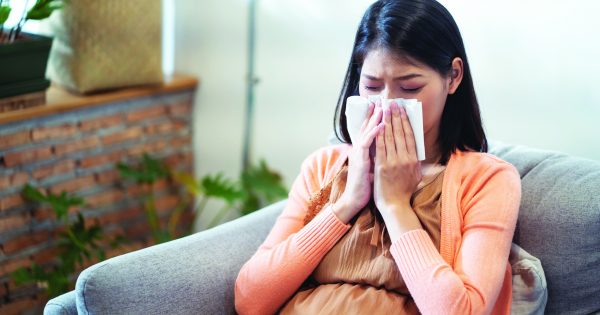Who would have thought that a seasonal flu could turn out to be a more deadly disease? When Damia Bastrisya came down with the flu, Erna Waty Salihuddin, the mother of the child, expected it to be nothing serious. Instead of visiting the doctor, she gave her child leftover medicines that she had at home thinking that it would clear the flu. Erna saw no improvements in Damia’s condition. Within a few days, Damia’s condition went from bad to worse. She was not only coughing, she began developing a fever as well.
“In several hours, her fever worsened. Her body was very hot and weakened dramatically. I knew I had to bring Damia to the hospital when she started vomiting,” said Erna.
“It’s H1N1”
Erna had a hard time digesting the news when the doctor broke the dreaded news to her. “Hearing that your child is infected by the H1N1 virus was really devastating. I felt so helpless. I never expected my own child to be infected by the deadly virus!”
H1N1 is an influenza virus that causes severe illness in people. It was first detected in April 2009 and on June 11, the World Health Organization (WHO) declared it a pandemic as the virus began claiming many lives. Malaysia’s first case occurred on May 15. During the peak period of the virus, several schools and universities were shut down. As of October 30, the death toll in Malaysia remains at 77 and has been stagnant the past months.
In Erna’s case, her child, Damia had definitely shown symptoms of the H1N1 virus infection. The symptoms included fever, cough, headache and fatigue. Some people might experience vomiting and diarrhoea. Young children and the elderly are at a higher risk, especially if they have medical conditions like asthma and heart disease.
Speedy Recovery
Damia was immediately put on an intravenous drip upon admission as she was dehydrated from vomiting. During her 5-day stay at the hospital, she had a steady supply of fluids, an antiviral agent and antibiotics and thankfully, her condition gradually improved.
As for Erna’s entire family, they quarantined themselves in their home for a week, as they did not want the virus to spread. They also wore masks and ensured that they kept themselves hygienic.
After The Ordeal
“Damia was and still is a strong girl. She fought very hard when the H1N1 virus infected her. I am so proud of her,” said Erna, as she smiled at Damia. From the horrific experience, Erna learned that she could not take things for granted.
“I used to think that it (H1N1 infection) won’t happen to my family but it did. We need to be more alert and more considerate of others. If you’re sick, it’s best to stay home. Do not let others get infected. In fact, see your family physician right away. It’s better to be safe than sorry.”
Here are several steps you can take to protect your family from getting infected by the H1N1 virus:
- Ensure that you cover your nose and mouth with tissue when you sneeze or cough. Discard the tissue into a wastepaper basket right away.
- Frequently wash your hands with soap and water. Non-alcohol hand sanitisers are useful.
- If possible, try to avoid close contact with sick people.
- If sick, stay at home for at least 24 hours or until your fever has subsided.
Remain Vigilant!
For the time being, studies have shown that there are no signs that the H1N1 virus has mutated to a more deadly form. However, WHO urges people to remain vigilant. Although recently cases of H1N1 have declined, there is a possibility of the world facing a second wave of the virus, which could be worse.







Comments